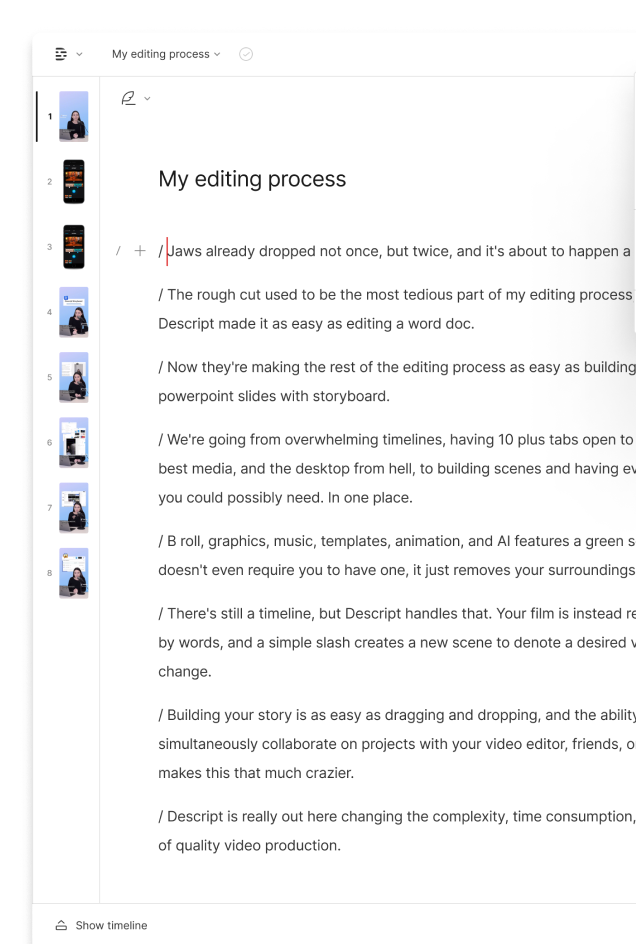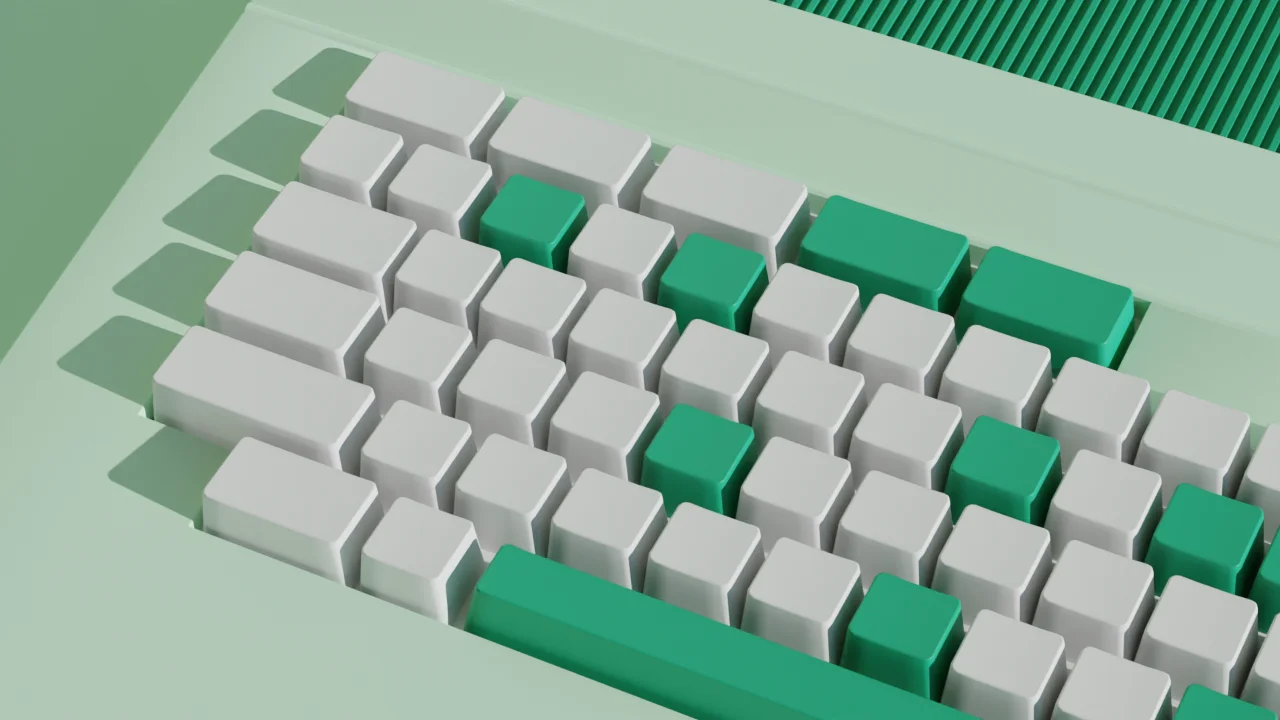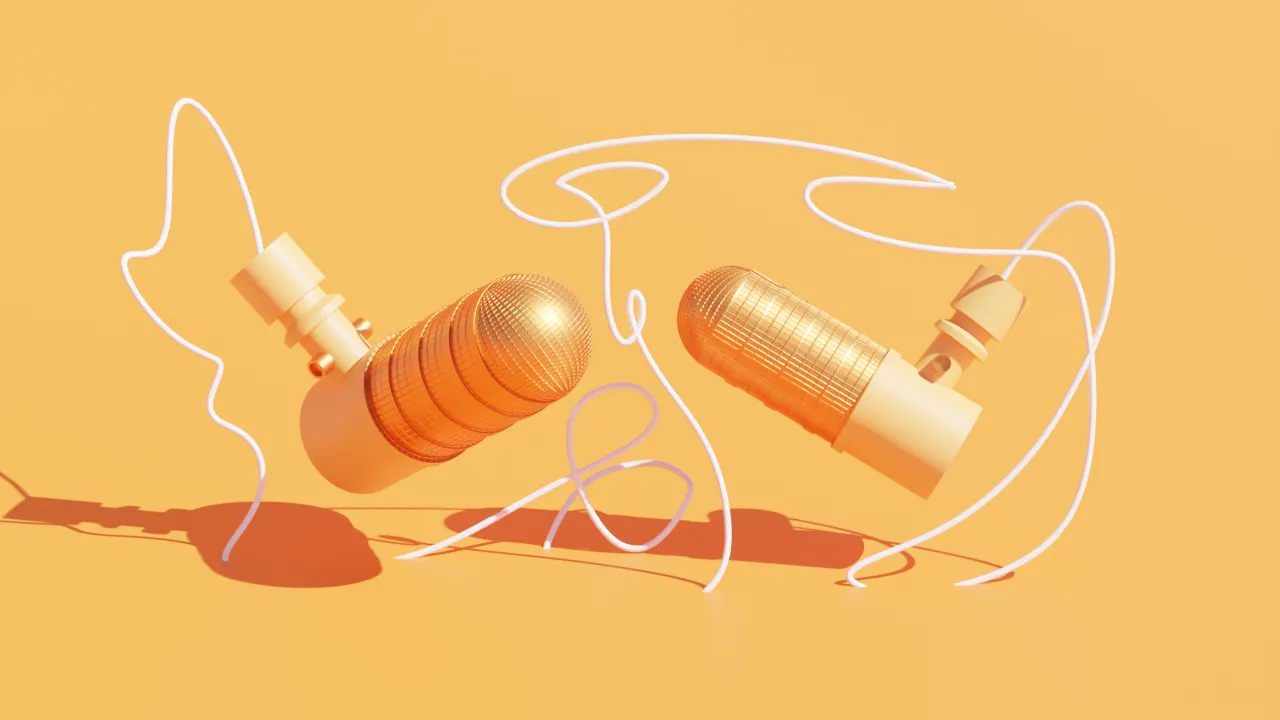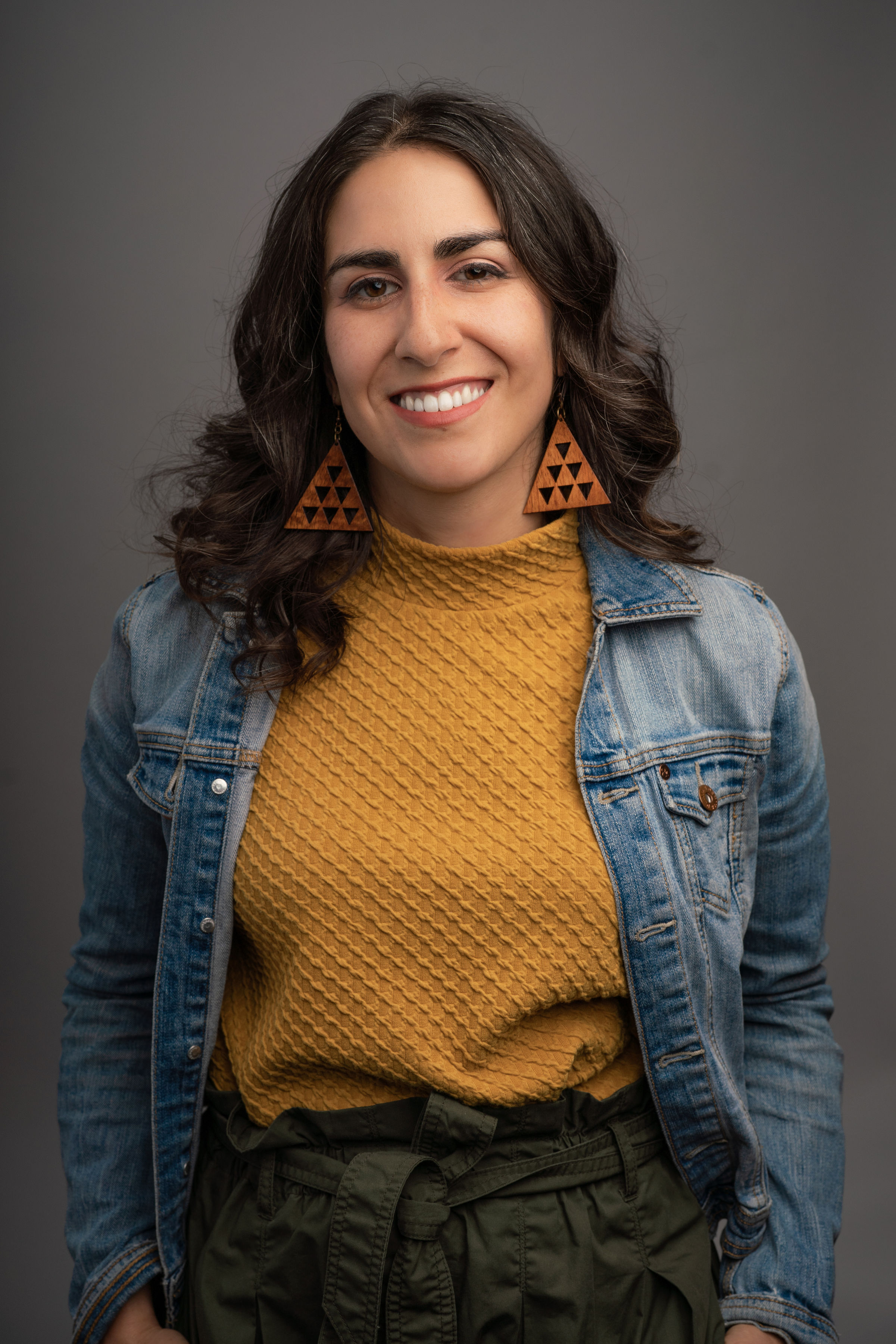What type of content do you primarily create?




When most people think about making a podcast or a video, they probably think about the recording part. But in reality, most of the work that goes into making audio or video content happens in the editing stage.
It’s like how “writing” a book is mostly about editing and revising; nobody just flips open their laptop and writes a perfect book, and nobody just opens their mouth and records a perfect podcast or video.
If you’re already making stuff, you’ve figured this out. You’ve also probably figured out that editing can be divided into distinctive parts, with different steps and goals. The two broadest are rough cuts and fine cuts.
We’ve talked about rough cuts here before — in our very first newsletter, where Jad Abumrad broke down his approach to carving a narrative out of a big pile of audio. That’s the crux of making a rough cut: turning your raw materials into a coherent, compelling episode.
“For me, a rough cut is finding the shape of the story,” says editor and filmmaker Allison Grasso. “And the beats of the story. You’re finding all your selects — all the bits you want in — and laying them out in the mostly correct order.”
Here we’ll delve a little more into rough cut techniques, in hopes of helping you focus your efforts so you can get a first cut faster. As usual, there’s no right way. You can start by cleaning up your audio, or by building your story. Find the way that works for you.
Make it listenable
Whether you’re working in audio or video, most of your actual content will probably be conveyed as sound. So one way to start making a rough cut is to quickly clean up your audio.
Samee Junio, a self-taught editor whose credits include self-care podcast Forever35, and who currently holds the title of Senior Podcast Editor for Entertainment Weekly, works on a lot of chat shows. When they dive into the rough cut, Samee’s first goal is just to make sure everything is listenable — to where the quality of the audio isn’t distracting from the quality of the conversation. Their primary tools for doing that are noise reduction and EQ.
Every editing tool has a noise reduction function; if you’re using Descript, you know that Studio Sound is so good at stripping out the noise and regenerating voices that it can free up whole swaths of your workflow. And as we’ve said here before, EQ is a valuable tool for every editor — it lets you manipulate various frequencies in your audio; Samee hunts out the frequency where the static lives, then reduces it until you can’t hear it. If you’re just starting out, EQ can be intimidating. But it’s worth taking the time to learn.
A good way for an editor of any proficiency to start the rough cut process in Descript would be to turn on EQ, just using the app’s presets. If you or anybody didn’t use a fancy mic or weren’t in a quiet room, apply Studio Sound too. You can fine-tune it all later.
Listen like a human
The crux of the rough cut is getting the content in shape. This is where you’ll make sweeping cuts of entire blocks of conversation, or remove smaller chunks where there’s some issue — crosstalk, background noise, excessive filler words — that you don’t want to deal with in fine edits, either because it’ll be too hard to clean up or because the content isn’t worth the effort.
Before you dive in, put yourself in the right mindset. Get focused on your goals for the show, and the point of the episode. Think about how you want the audience to react, what you want them to feel, or think. Making a good rough cut requires a refined, almost visceral understanding of those things.
That’s how you’ll have the confidence to make the hard cuts. Like when your guest delivers a hilarious, heartbreaking anecdote about their trip to Borneo that has nothing to do with your interview about pet insurance. It might be the most riveting part of the conversation, but your audience wants to know if they should insure their dog, not whether they should visit Borneo.
Every editor runs into these moments — writers call it “killing your darlings,” because we love drama — where you’re torn over whether to keep or cut the stuff that’s wonderful but doesn't help make the point you’re trying to make. It sucks, but you cannot waver: kill your darlings; kill them all.
How do you know which to kill? Samee says it’s important to pay attention to your own reactions. “I'm listening as an editor, but also as a human person,” they say. “If I find myself wandering off in my brain I'll be like, I think this should go.” That’s true even for stuff that’s spot-on, topic-wise, but not engaging for whatever reason.
Politico Senior Podcast Editor Raghu Manavalan frames it in terms of what's memorable. “I think about what I wanna tell my friends later that day," he says. "Even if it's not perfectly stated, it’s the stuff that sticks with people.”
Shape the narrative
Once you’ve decided what to keep and what has to go, you’ll want to take a step back and think about what goes where — “the flow of your conversation,” as Raghu says. Sometimes a conversation naturally flows exactly the way you want it, but the rough cut stage is your chance to question the way information is ordered, and to find the order that will make most sense to, or have the most impact on, your audience.
Raghu, who edits and hosts Politico’s Daily Playbook Briefings podcast, and helps produce a number of other shows, says finding the right flow is about experimentation. He might ask, “What if we put these six quotes that I thought were gonna be in the middle of the story right up at the front?” — and then try it, see how it sounds. He knows he can always move it back.
Jumping in and moving stuff around can also help overcome the paralysis you might fear when you’re sitting there staring at 90 minutes of audio or video you know you need to wrangle into a tight half-hour episode.
“It's scary when you're just rough,” Raghu says. “So I think, especially in that stage, you’re just trying to wrap your head around it and see the shape of it, where you want to go.”
That’s the real secret of editing: it’s iterative. You can’t see the fine cuts you need to make until the rough ones are done. And sometimes you can’t see the smartest rough cuts until you’ve made some really dumb choices. So dive in and start playing around, and let your instincts guide you.
%20(1).JPG)













































